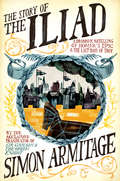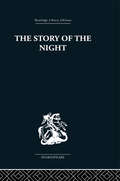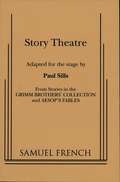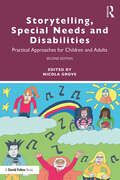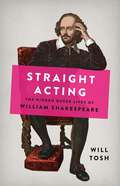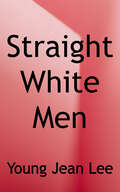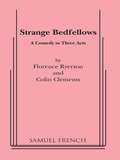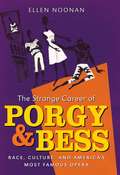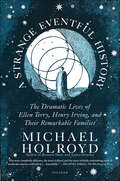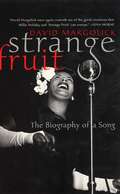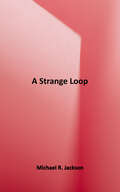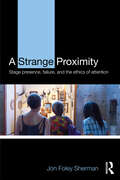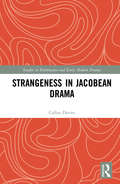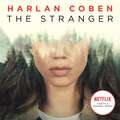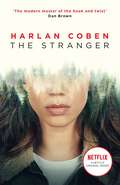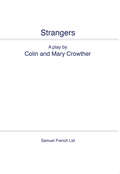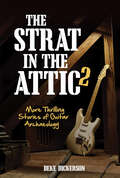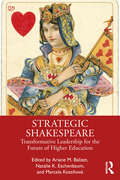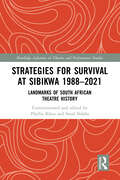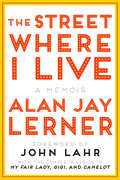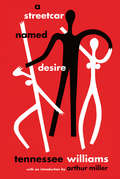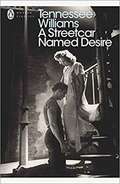- Table View
- List View
The Story of the Iliad: A Dramatic Retelling of Homer’s Epic and the Last Days of Troy
by Simon ArmitageAward-winning poet Simon Armitage dramatizes the story of Troy, animating this classic epic for a new generation of readers. Following his highly acclaimed dramatization of the Odyssey, Simon Armitage here takes on the fate of Troy, bringing Homer's Iliad to life with refreshing imaginative vision. In the final days of the Trojan War, the Trojans and the Greeks are caught in a bitter stalemate. Exhausted and desperate after ten years of warfare, gods and men battle among themselves for the glory of recognition and a hand in victory. Cleverly intertwining the Iliad and the Aeneid, Armitage poetically narrates the tale of Troy to its dire end, evoking a world plagued by deceit, conflict, and a deadly predilection for pride and envy. As with the Odyssey, Armitage reveals the echoes of ancient myth in our contemporary war-torn landscape, and reinvigorates the classic epics with adventure, passion, and, surprisingly, Shakespearean wit.
The Story of the Night: Studies in Shakespeare's Major Tragedies
by John HollowayFirst published in 1961. Critiquing the critics, and examining the vocabulary of twentieth century criticism of the Shakespearean tragedies, John Holloway's book covers Hamlet, Othello, Macbeth, King Lear, Antony and Cleopatra, Coriolanus, Timon of Athens and the themes of Shakespearean Tragedy and the idea of human sacrifice and the concepts of myth and ritual in literature.
Story Theatre
by Paul SillsFables / 5m, 3f / Stage, projections / Mr. Sills started in New Haven, journeyed to the Mark Taper Forum in Los Angeles, and wound up on Broadway with this group of famous fables from the Grimm Brothers and Aesop. Here you will meet again Henny Penny, the Golden Goose, Venus and the Cat, the Fisherman and His Wife, The Robber Baron, the Bremen Towson Musicians, and other favorites. The fables require talented actors with expressive bodies. And make no mistakes about the quality: this is top drawer adult theatre.
Storytelling in Participatory Arts with Young People: The Gaps in the Story (Palgrave Studies In Play, Performance, Learning, and Development)
by Catherine HeinemeyerThis book draws on the author’s experience as a storyteller, drama practitioner and researcher, to articulate an emerging dialogic approach to storytelling in participatory arts, educational, mental health, youth theatre, and youth work contexts. It argues that oral storytelling offers a rich and much-needed channel for intergenerational dialogue with young people.The book keeps theory firmly tethered to practice. Section 1, ‘Storyknowing’, traces the history of oral storytelling practice with adolescents across diverse contexts, and brings into clear focus the particular nature of the storytelling exchange and narrative knowledge. Section 2, ‘Telling Stories’, introduces readers to some of the key challenges and possibilities of dialogic storytelling by reflecting on stories from the author’s own arts-based practice research with adolescents, illustrating these with young people’s artistic responses to stories. Finally, section 3, ‘Story Gaps’, conceptualises dialogic storytelling by exploring three different ‘gaps’: the gap between storyteller and listener, the gaps in the story, and the gaps which storytellers can open up within institutions. The book includes chapters taking a special focus on storytelling in schools and in mental health settings, as well as guided reflections for readers to relate the issues raised to their own practice.
Storytelling, Special Needs and Disabilities: Practical Approaches for Children and Adults
by Nicola GroveNow in a fully revised and updated second edition, this innovative and wide-ranging book shows how storytelling can open new worlds for individuals with special educational needs and disabilities. Providing a highly accessible combination of theory and practice, the contributors to this book define their own approaches to inclusive storytelling, describing the principles and theory that underpin their practice, whilst never losing sight of the joy at the heart of their work. Topics include therapeutic storytelling; language and communication; interactive and multi-sensory storytelling; and technology. Each chapter includes top tips, and signposts further training for practitioners who want to start using stories in their own work, making this book a crucial and comprehensive guide to storytelling practice with diverse learners. This new edition: · has been fully updated to reflect the way in which this field of storytelling has grown and developed · uses a broad range of chapters, structured in a way that guides the reader through the conceptualisation of a storytelling approach towards its practical application · includes an additional chapter, sharing the lived experiences of storytellers who identify as having a disability. Full of inspiring ideas to be used with people of all ages and with a range of needs, this book will be an invaluable tool for education professionals, as well as therapists, youth workers, counsellors and theatre practitioners working in special education.
Straight Acting: The Hidden Queer Lives of William Shakespeare
by Will ToshA dazzling and "highly readable" (Guardian) portrait of Shakespeare as a young artist, revealing how his rich and complex queer life informed the plays and poems we treasure today &“Was Shakespeare gay?&” For years the question has sent experts and fans into a tailspin of confusion. But as scholar Will Tosh argues, this debate misses the point: sex, intimacy, and identity in Elizabethan England were infinitely more complex—and queer—than we have been taught. In this incisive biography, Tosh reveals William Shakespeare as a queer artist who drew on his society&’s nuanced understanding of gender and sexuality to create some of English literature&’s richest works. During Shakespeare&’s time, same-sex desire was repressed and punished by the Church and state, but it was also articulated and sustained by institutions across England. Moving through the queer spaces of Shakespeare&’s life—his Stratford schoolroom, smoky London taverns and playhouses, the royal court—Tosh shows how strongly Shakespeare&’s early work was influenced by the queer culture of the time, much of it totally integrated into mainstream society. He also uncovers the surprising reason why Shakespeare veered away from his early work&’s gender-bending homoeroticism. Offering a subversive sketch of Elizabethan England, Straight Acting uncovers Shakespeare as one of history&’s great queer artists and completely reshapes the way we understand his life and times.
Straight White Men: Untitled Feminist Show
by Young Jean LeeTwo plays by the award-winning dramatist, the first Asian-American female playwright to be produced on Broadway. <p><p>In Straight White Men, it's Christmas Eve, and Ed has gathered his three adult sons to celebrate with matching pajamas, trash-talking, and Chinese takeout. But when a question they can't answer interrupts their holiday cheer, they are forced to confront their own identities. <p><p>In Untitled Feminist Show, six charismatic stars of the downtown theatre, dance, cabaret, and burlesque worlds come together to invite the audience on an exhilaratingly irreverent, nearly-wordless celebration of a fluid and limitless sense of identity.
Strange Bedfellows
by Florence RyersonComedy \ 7 m., 11 f. \ Int. \ Senator Cromwell, an old line politician who keeps his women under stern rule, has a new daughter in law. When he learns Matthew's bride is a feminist leader campaigning for the Women's Rights Bill due to come up in the same election Matthew is running in for re election to Congress, there is an explosion which shakes the family and threatens Matthew's marriage. \ "If you're looking for laughs, don't miss Strange Bedfellows ." N.Y. Mirror
The Strange Career of Porgy and Bess
by Ellen NoonanCreated by George Gershwin and DuBose Heyward and sung by generations of black performers, Porgy and Bess has been both embraced and reviled since its debut in 1935. In this comprehensive account, Ellen Noonan examines the opera's long history of invention and reinvention as a barometer of twentieth-century American expectations about race, culture, and the struggle for equality. In its surprising endurance lies a myriad of local, national, and international stories.For black performers and commentators, Porgy and Bess was a nexus for debates about cultural representation and racial uplift. White producers, critics, and even audiences spun revealing racial narratives around the show, initially in an attempt to demonstrate its authenticity and later to keep it from becoming discredited or irrelevant. Expertly weaving together the wide-ranging debates over the original novel, Porgy, and its adaptations on stage and film with a history of its intimate ties to Charleston, The Strange Career of "Porgy and Bess" uncovers the complexities behind one of our nation's most long-lived cultural touchstones.
A Strange Eventful History: The Dramatic Lives of Ellen Terry, Henry Irving, and Their Remarkable Families
by Michael HolroydPLEASE NOTE: THIS EBOOK DOES NOT CONTAIN PHOTOS INCLUDED IN THE PRINT EDITION.Deemed "a prodigy among biographers" by The New York Times Book Review, Michael Holroyd transformed biography into an art. Now he turns his keen observation, humane insight, and epic scope on an ensemble cast, a remarkable dynasty that presided over the golden age of theater.Ellen Terry was an ethereal beauty, the child bride of a Pre-Raphaelite painter who made her the face of the age. George Bernard Shaw was so besotted by her gifts that he could not bear to meet her, lest the spell she cast from the stage be broken. Henry Irving was an ambitious, harsh-voiced merchant's clerk, but once he painted his face and spoke the lines of Shakespeare, his stammer fell away to reveal a magnetic presence. He would become one of the greatest actor-managers in the history of the theater. Together, Terry and Irving created a powerhouse of the arts in London's Lyceum Theatre, with Bram Stoker—who would go on to write Dracula—as manager. Celebrities whose scandalous private lives commanded global attention, they took America by stormin wildly popular national tours.Their all-consuming professional lives left little room for their brilliant but troubled children. Henry's boys followed their father into the theater but could not escape the shadow of his fame. Ellen's feminist daughter, Edy, founded an avant-garde theater and a largely lesbian community at her mother's country home. But it was Edy's son, the revolutionary theatrical designer Edward Gordon Craig, who possessed the most remarkable gifts and the most perplexing inability to realize them. A now forgotten modernist visionary, he collaborated with the Russian director Stanislavski on a production of Hamlet that forever changed the way theater was staged. Maddeningly self-absorbed, he inherited his mother's potent charm and fathered thirteen children by eight women, including a daughter with the dancer Isadora Duncan.An epic story spanning a century of cultural change, A Strange Eventful History finds space for the intimate moments of daily existence as well as the bewitching fantasies played out by its subjects. Bursting with charismatic life, it is an incisive portrait of two families who defied the strictures of their time. It will be swiftly recognized as a classic.Please note: This ebook edition does not contain photos and illustrations that appeared in the print edition.
Strange Fruit: The Biography Of A Song
by David MargolickRecorded by jazz legend Billie Holiday in 1939, "Strange Fruit" is considered to be the first significant song of the civil rights movement and the first direct musical assault upon racial lynchings in the South. Originally sung in New York's Cafe Society, these revolutionary lyrics take on a life of their own in this revealing account of the song and the struggle it personified. Strange Fruit not only chronicles the civil rights movement from the '30s on, it examines the lives of the beleaguered Billie Holiday and Abel Meeropol, the white Jewish schoolteacher and communist sympathizer who wrote the song that would have an impact on generations of fans, black and white, unknown and famous, including performers Lena Horne, Eartha Kitt, and Sting.
A Strange Loop
by Michael R. JacksonWinner of the 2020 Pulitzer Prize for Drama “To watch this show is to enter, by some urgent, bawdy magic, an ecstatic and infinitely more colorful version of the famous surreal lithograph by M. C. Escher: the hand that lifts from the page, becoming almost real, then draws another hand, which returns the favor. Which came first? A Strange Loop is complex, teasing, thrilling.” —Vinson Cunningham, New Yorker Usher is a Black, queer writer, working a day job he hates while writing his original musical: This blistering musical follows a young artist at war with a host of demons, not least of which are the punishing thoughts in his own head—in an attempt to understand his own strange loop.
A Strange Proximity: Stage Presence, Failure, and the Ethics of Attention
by Jon Foley ShermanWhat happens in the relationship between audience and performer? What choices are made in the space of performance about how we attend to others? A Strange Proximity examines stage presence as key to thinking about performance and ethics. It is the first phenomenological account of ethics generated from, rather than applied to, contemporary theatrical productions. The ethical possibilities of the stage, argues Jon Foley Sherman, rest not so much in its objects—the performers and the show itself—as in the “how” of attending to others. A Strange Proximity is a unique perspective on the implications of attention in performance.
Strangeness in Jacobean Drama (Studies in Performance and Early Modern Drama)
by Callan DaviesCallan Davies presents “strangeness” as a fresh critical paradigm for understanding the construction and performance of Jacobean drama—one that would have been deeply familiar to its playwrights and early audiences. This study brings together cultural analysis, philosophical enquiry, and the history of staged special effects to examine how preoccupation with the strange unites the verbal, visual, and philosophical elements of performance in works by Marston, Shakespeare, Middleton, Dekker, Heywood, and Beaumont and Fletcher. Strangeness in Jacobean Drama therefore offers an alternative model for understanding this important period of English dramatic history that moves beyond categories such as “Shakespeare’s late plays,” “tragicomedy,” or the home of cynical and bloodthirsty tragedies. This book will be of great interest to students and scholars of early modern drama and philosophy, rhetorical studies, and the history of science and technology.
The Stranger: Now a major Netflix show
by Harlan CobenThe Stranger appears out of nowhere, perhaps in a bar, or a parking lot, or at the grocery store. His identity is unknown. His motives are unclear. His information is undeniable. Then he whispers a few words in your ear and disappears, leaving you picking up the pieces of your shattered world.Adam Price has a lot to lose: a comfortable marriage to a beautiful woman, two wonderful sons, and all the trappings of the American Dream - a big house, a good job, a seemingly perfect life.Then he runs into the Stranger. When he learns a devastating secret about his wife, Corrine, he confronts her, and the mirage of perfection disappears as if it never existed at all. Soon Adam finds himself tangled in something far darker than even Corrine's deception, and realises that if he doesn't make exactly the right moves, the conspiracy he's stumbled into will not only ruin lives - it will end them.Read by Eric Meyers(p) 2015 Orion Publishing Group
The Stranger: A gripping thriller from the #1 bestselling creator of hit Netflix show Fool Me Once (Myron Bolitar Ser. #11)
by Harlan CobenNOW A MAJOR NETFLIX SERIES. WE ALL HAVE SECRETS...'I wanted to finish it so fast so I could learn the truth about what really happened' ⭐⭐⭐⭐⭐'Right from page one this is a real pageturner' ⭐⭐⭐⭐⭐Adam Price has a lot to lose: a beautiful family, a big house, a good job - a perfect life.But then he meets a stranger in a bar and learns a shocking secret about his wife.With the mirage of perfection shattered, Adam finds himself caught up in something far darker than his wife's deception.And if he doesn't make the right moves, the conspiracy he's stumbled into will not only ruin lives - it will end them.
Strangers: A Play
by Colin Crowther Mary CrowtherThey may be mother and daughter yet they are strangers to each other, still refusing to face what really happened that day. No wonder they cannot move on with their lives. It takes another stranger, Cassiel, a passing fisherman to help them disentangle the weeds that are drowning them. But Cassiel is more than he appears...A hauntingly beautiful, many-layered tale of love and forgiveness, played out on an abandoned jetty.
The Strat in the Attic 2: More Thrilling Stories of Guitar Archaeology
by Deke DickersonDon’t fret! The music historian and guitar sleuth brings you more astounding stories of rare guitar finds and the legends who owned them.Do you dream of finding a 1954 Stratocaster or 1952 Gibson Les Paul online, at a garage sale, or in the local penny saver? How about virtually rubbing elbows with one of your favorite rock legends? Following up his first-of-its-kind The Strat in the Attic, musician, journalist, and “guitarchaeologist” Deke Dickerson shares the stories behind dozens of more astounding finds including:A rarer-than-hens-teeth 1966 Hallmark Swept-Wing that originally belonged to Robbie Krieger of the Doors, stashed away in an attic in Alaska for forty years!A crazy-valuable 1958 Gibson Flying V belonging to a Chicago bluesman—who, it turns out, also happens to have an equally rare 1958 Gibson Explorer!An out-of-the-blue, a “to whom it may concern” email leads the author to a trailer park in Salem, Oregon, where one of Bob Wills and the Texas Playboys’ original 1940s Epiphone Emperor archtops is waiting to be purchased for a song!Luthier R.C. Allen relates the tales of buying Nat “King” Cole Trio guitarist Oscar Moore’s Stromberg Master 400 archtop and of being gifted a 1953 Standel amp from Merle Travis!Buddy Merrill, the amazingly talented guitarist from the Lawrence Welk show, gives his 1970 Micro-Frets Huntington to the author, but only if he “promises to PRACTICE.”Photos of the guitars and other exciting memorabilia round out a package that no vintage-guitar aficionado will want to be without!“The man knows how to tell a great story.” —Jonathan Kellerman, #1 New York Times–bestselling author
Strategic Shakespeare: Transformative Leadership for the Future of Higher Education
by Marcela Kostihová Natalie K. Eschenbaum Ariane M. BalizetStrategic Shakespeare demonstrates the value of humanities-trained scholars as leaders in higher education. It features contributions from Renaissance and Shakespearean scholars in leadership roles in North American higher education, who collectively aim to leverage traditional assumptions about Shakespeare in the service of a more inclusive and sustainable academy.Making a powerful case for the liberal arts, the contributors demonstrate ways in which training in the humanities creates a baseline of skills in collaboration, deep listening, tolerance for ambiguity, and a range of positionalities. They also illustrate an astute understanding of disparate data sets, persuasive storytelling, and a commitment to liberal arts education. As this innovative collection showcases, these skills are crucial in the current climate, as higher education struggles with declining enrolments, decreasing budgets, growing public distrust, and (often) hostile legislative oversight. Additionally, the skills help us navigate a rapidly shifting landscape of learning in the aftermath of the COVID-19 pandemic and entry of generative artificial intelligence (AI) to the public sphere. The collection presents theoretical arguments, case studies, personal narratives, and practical advice related to how humanities-trained scholars have led and must continue to lead the academy through transformative change.Strategic Shakespeare is an essential tool for anyone interested in learning from university leaders who have made good things happen on their campuses, in their communities, and in the profession. It celebrates and foregrounds the core adaptive skills that humanities scholars bring to the table, showcasing their unique predisposition for successful academic leadership during a time of unprecedented change.
Strategies for Survival at SIBIKWA 1988 – 2021: Landmarks of South African Theatre History (Routledge Advances in Theatre & Performance Studies)
by Phyllis Klotz Smal NdabaThis book provides an engaging and contextualised insight into a South African township-based arts centre that has survived the vicissitudes of steady militarisation in townships during some of the worst years of apartheid as well as the exhilaration of a new democratic policy while attempting to circumnavigate different policies and funding dispensations. Sibikwa provides arts centres across the world and especially those in decolonising countries with strategies for survival in tumultuous times. This multi-disciplinary book maps and co-ordinates wider historical, political, and social contextual concerns and events with matters specific to a community-based east of Johannesburg and provides an exploration and analysis by experts of authentic theatre-making and performance, dance, indigenous music, arts in education and NGO governance. It has contemporary significance and raises important questions regarding inclusivity and transformation, the function and future of arts centres, community-based applied arts practices, creativity, and international partnerships. This study will be of great interest to students and scholars in theatre and performance, indigenous music, dance, and South African history.
Street Soldiers (Drama High #15)
by L. DivineStressed out by strange visions and insomnia, Jayd finds herself back at Mama's house. Mama's convinced that something sinister is at play. But can they come up with a plan to get Jayd's swagger back? [Proofreader's Note: Many errors in the original text, both grammar and spelling. Errors left as is following copyright laws.]
The Street Where I Live: A Memoir (Pop Concert Full Orchestra Ser.)
by Alan J. Lerner“Lerner will always be remembered as a Broadway light, and one of the brightest.” —Tom Shales, The Washington Post The Street Where I Live is at once an intimate biography of three great shows—My Fair Lady, Gigi, and Camelot—and a candid account of the life and times of Alan J. Lerner, one of America’s most acclaimed and popular lyricists. Large-hearted, humorous, and often poignant in its reverence for a celebrated era in the American theater, this is the story of what Lerner calls "the sundown of wit, eccentricity, and glamour." Try as he might to keep himself out of these pages, Lerner reveals himself to be a man of great talent, laughter, and love. Along the way, we meet a sensational supporting cast: Moss Hart, Fritz Loewe, Julie Andrews, Richard Burton, Rex Harrison, Cecil Beaton, Louis Jourdan, and Maurice Chevalier, to name a few. They are seen in moments of triumph and disaster, but all are professionals at the creation of theater. And the creation of theater is the matrix of this wonderful book. Included are the complete lyrics to My Fair Lady, Gigi, and Camelot.
A Streetcar Named Desire
by Arthur Miller Tennessee WilliamsThe Pulitzer Prize and Drama Critics Circle Award winning play--reissued with an introduction by Arthur Miller (Death of a Salesman and The Crucible), and Williams' essay "The World I Live In." It is a very short list of 20th-century American plays that continue to have the same power and impact as when they first appeared--57 years after its Broadway premiere, Tennessee Williams' A Streetcar Named Desire is one of those plays. The story famously recounts how the faded and promiscuous Blanche DuBois is pushed over the edge by her sexy and brutal brother-in-law, Stanley Kowalski. Streetcar launched the careers of Marlon Brando, Jessica Tandy, Kim Hunter and Karl Malden, and solidified the position of Tennessee Williams as one of the most important young playwrights of his generation, as well as that of Elia Kazan as the greatest American stage director of the '40s and '50s. Who better than America's elder statesman of the theater, Williams' contemporary Arthur Miller, to write as a witness to the lightning that struck American culture in the form of A Streetcar Named Desire? Miller's rich perspective on Williams' singular style of poetic dialogue, sensitive characters, and dramatic violence makes this a unique and valuable new edition of A Streetcar Named Desire. This definitive new edition will also include Williams' essay "The World I Live In," and a brief chronology of the author's life.
A Streetcar Named Desire
by Tennessee WilliamsThe story of Blanche DuBois and her last grasp at happiness, and of Stanley Kowalski, the one who destroyed her chance.
